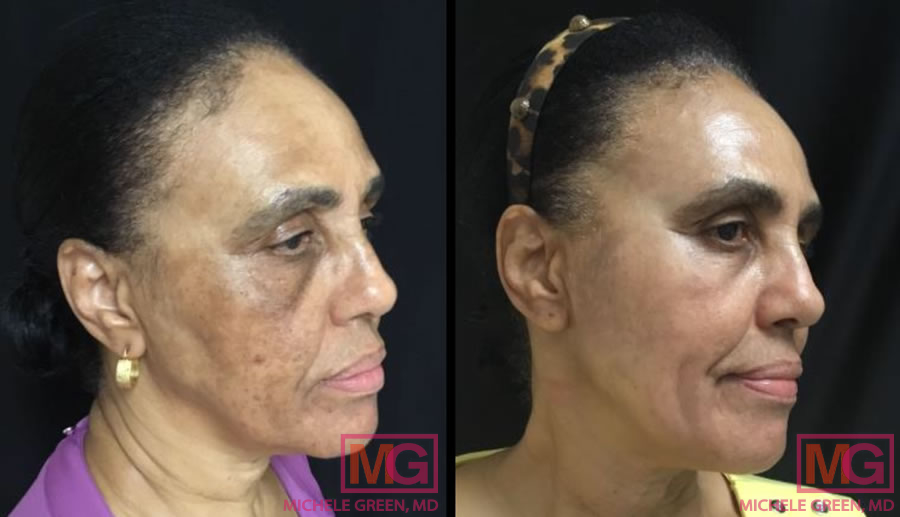
Did you know July is officially Melasma Awareness Month? The appearance of brown or greyish-brown patches on the face and most commonly on the forehead, cheeks, bridge of the nose and other high parts of the face is a chronic type of hyperpigmentation. Melasma is a condition that can affect up to 33% of the general population at some point, and most prevalent for skin tones with higher melanin concentration – Fitzpatrick skin types III-VI.

Unlike the marks left by blemishes or wounds which may fade over time, melasma requires a dedicated treatment plan. While the exact causes aren’t fully understood, it’s linked to several factors – hormonal changes, sun exposure – it can sneak up on us. After a lifetime of dealing with hyperpigmentation from breakouts, last year I noticed a pigmented patchiness on my forehead that didn’t fade from normal exfoliation and Vitamin C. It was only at a visit to a dermatologist for an anti-aging facial that I rec’d the diagnosis in passing of this rather common, though non-cancerous condition.
 In an effort to learn as much about melasma as a beauty writer as I can to keep Beauty News NYC Official readers up to speed, I was ecstatic that Dr. Michele Green, a board-certified cosmetic dermatologist who specializes the treating condition, was willing to explain the condition and best practices for treating it during Melasma Awareness Month.
In an effort to learn as much about melasma as a beauty writer as I can to keep Beauty News NYC Official readers up to speed, I was ecstatic that Dr. Michele Green, a board-certified cosmetic dermatologist who specializes the treating condition, was willing to explain the condition and best practices for treating it during Melasma Awareness Month.
Melasma Awareness Q & A with board-certified cosmetic dermatologist Dr. Michele Green

1. What is melasma, and how does it differ from hyperpigmentation?
Melasma is a common skin condition characterized specifically by symmetrical, brownish patches on the face. People may develop melasma in areas with more sun exposure, such as the cheeks, chin, nose bridge, and forehead. However, it may also appear on various parts of the body, including the neck, forearms, and legs.
Hyperpigmentation is an umbrella term for any skin darkening or discoloration ranging from mild to severe. Melasma is a specific type of hyperpigmentation that may be caused by sun damage, hormonal fluctuations, or genetic disposition, although the exact cause remains unknown. Hyperpigmentation in general can be triggered by various factors, including acne scars, medications, skin inflammation, and, most commonly, sun exposure. While some types of hyperpigmentation can be treated with topical creams, melasma is not as easily treated.
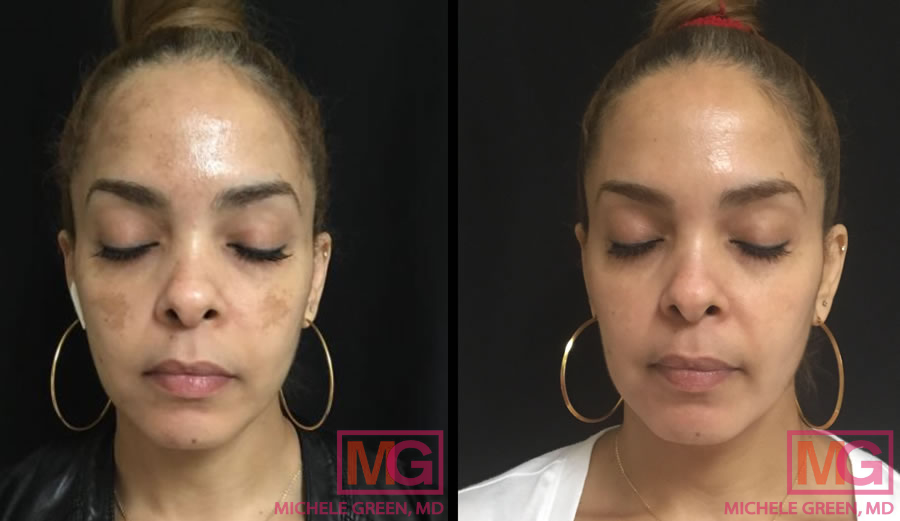
2. Which ingredients are most effective for fading hyperpigmentation?
Three of the most effective skin-lightening ingredients commonly found in skincare products are vitamin C, kojic acid, and niacinamide, each offering unique benefits for achieving a brighter complexion.

Vitamin C is one of the best ingredients in skincare and serves multiple roles. One of its primary functions is to combat hyperpigmentation by inhibiting melanin production. This results in a brighter, more even skin tone, enhancing the skin’s natural glow while protecting against environmental stressors.
Kojic acid is another gentle yet potent ingredient for targeting dark spots. It works by inhibiting the enzyme tyrosinase, which is essential for melanin synthesis, effectively lightening areas of hyperpigmentation without harsh side effects.
Niacinamide, a form of vitamin B3, is renowned for its versatility and effectiveness. It helps to regulate melanin levels in the skin, improving the appearance of dark spots and promoting the formation of healthy, evenly-toned skin cells. Incorporating these ingredients into your skincare routine can significantly enhance skin clarity and radiance, leading to a more luminous and youthful complexion.
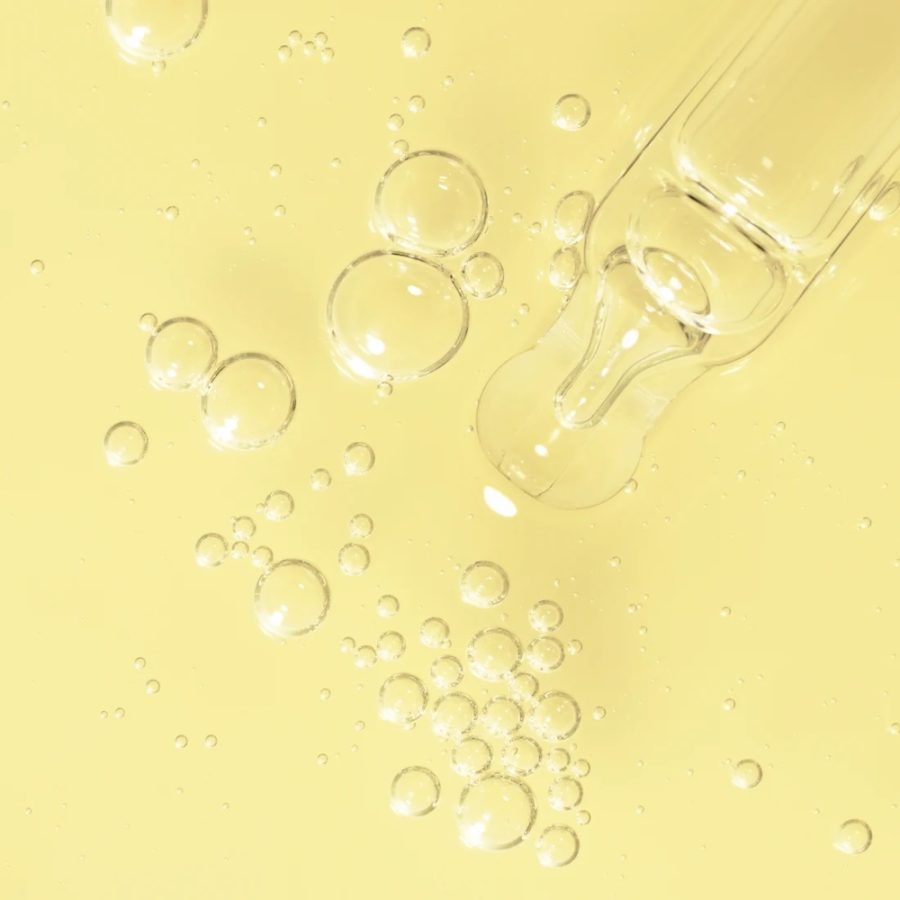
3. Which skin care products and regimens have yielded the best results for your patients?
When dealing with melasma, it is essential to adopt a gentle skincare routine that incorporates over-the-counter products to cleanse and moisturize the affected areas of the skin gently. Some topicals, such as tranexamic acid, azelaic acid, kojic acid, and vitamin C, act as tyrosinase inhibitors, blocking a crucial enzyme necessary for melanin production and thereby reducing pigmentation, while evening out skin tone.
A prescription skin bleaching cream, hydroquinone, can also yield results for patients dealing with melasma. A hydroquinone cream inhibits the production of melanin and should only be used on the dark spots, as it is a skin lightening agent. A board-certified dermatologist should supervise this prescription, and it should not be used for extended periods.
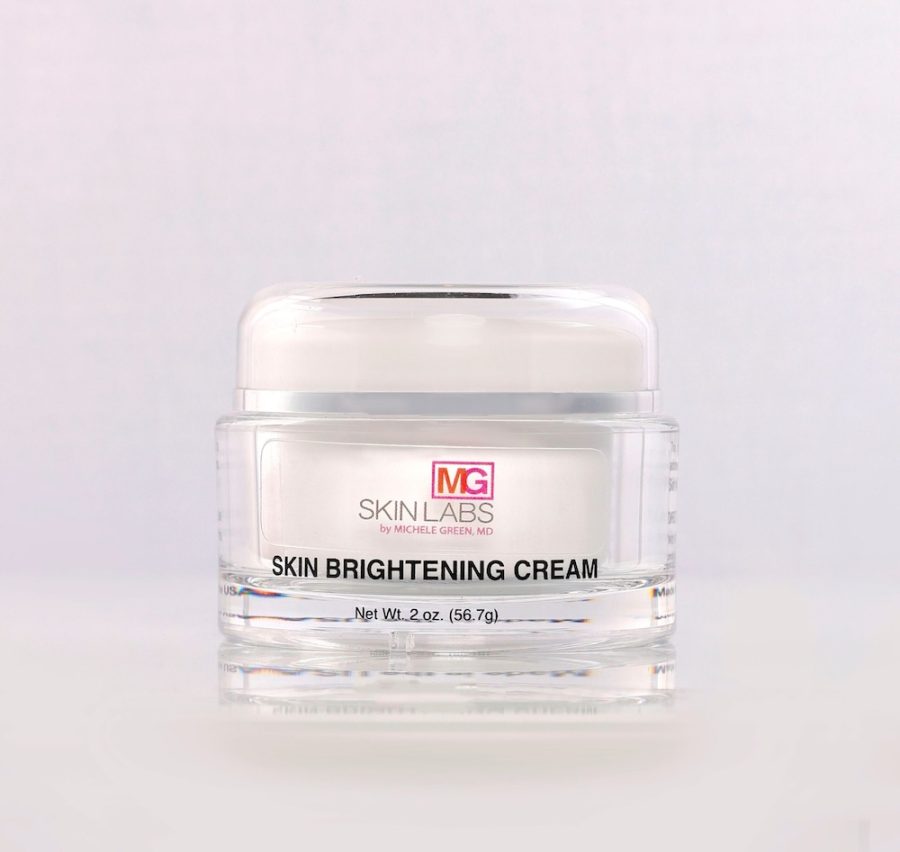
Lastly, as sun damage is a major trigger for hyperpigmentation and worsening of melasma, it is essential to incorporate a broad-spectrum SPF 50 sunscreen into your morning skincare routine, as well as a sun hat, to protect the skin from further sun damage.
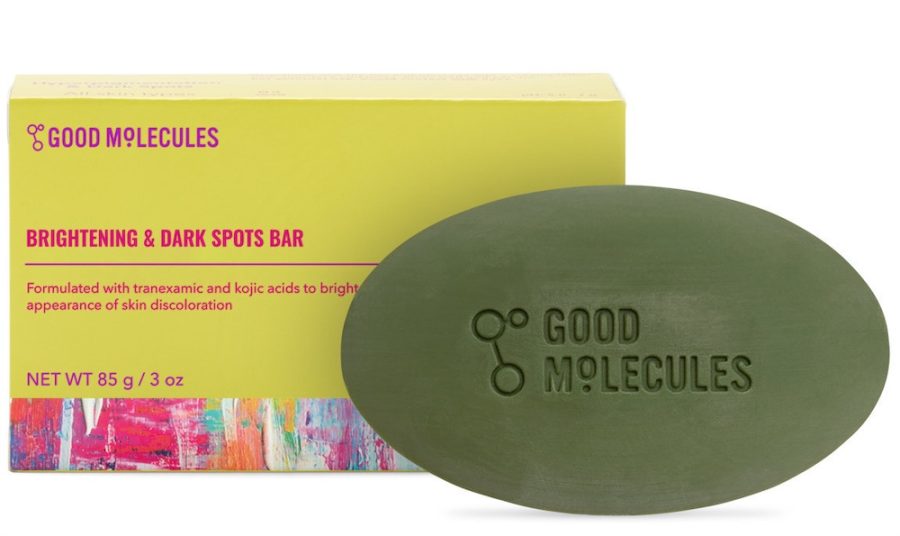 Cleansers, Serums and Treatments for Melasma & Hyperpigmentation
Cleansers, Serums and Treatments for Melasma & Hyperpigmentation
Beloved budget-friendly sensation Good Molecules recently launched the Brightening & Dark Spots Bar. Formulated with 2% tranexamic acid, 2% kojic acid, and niacinimide, the soap-free bar lathers luxuriously and has yielded noticeable results with twice daily use this summer on face, arms, hands.
Among the bestsellers from Dr. Green’s MGSkinLabs are the hyperpigmentation and melasma-targeting Vita-C-Serum and Skinbright RX For Face, Neck, Chest which contains pigment-correcting kojic acid and other fruit acids for exfoliation.
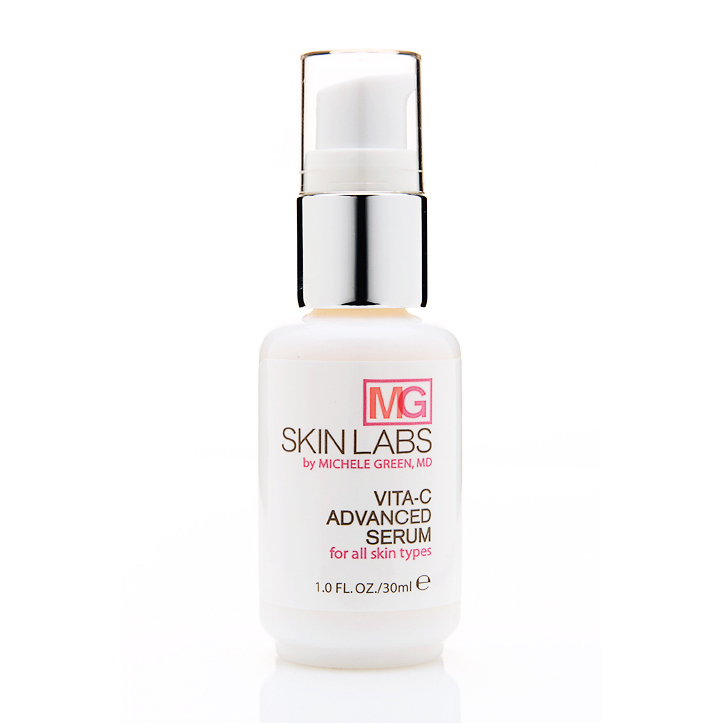 Newly launched Japanese-inspired IKI Skincare offers several vegan serums formulated with actives for sensitive and pigmented skin. The Kido Brightening Serum contains the trifecta of actives for even-toned skin: retinol, kojic acid, alpha arbutin. Dedicated nightly use has significantly faded my melasma forehead patch.
Newly launched Japanese-inspired IKI Skincare offers several vegan serums formulated with actives for sensitive and pigmented skin. The Kido Brightening Serum contains the trifecta of actives for even-toned skin: retinol, kojic acid, alpha arbutin. Dedicated nightly use has significantly faded my melasma forehead patch.
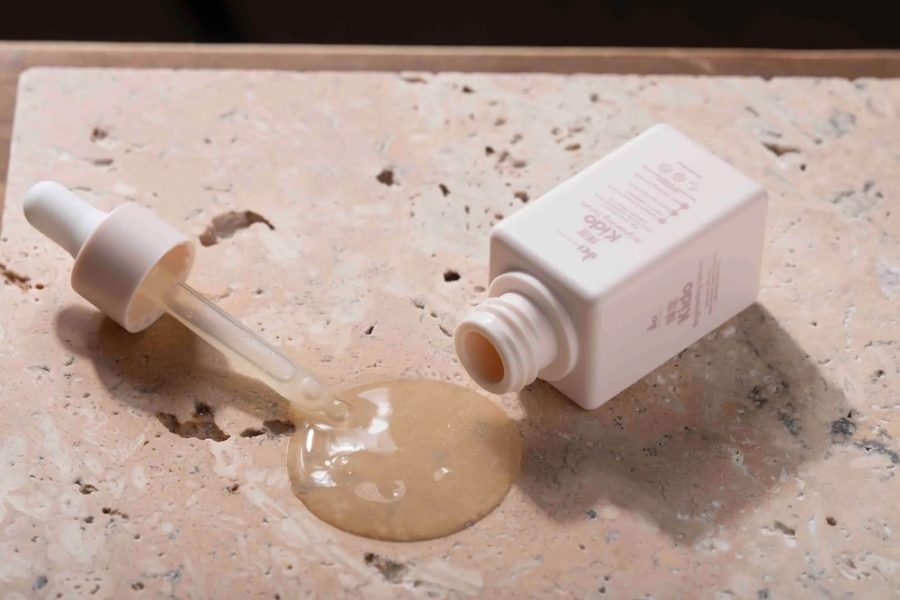
4. What causes melasma? Why does it seem that melasma is related to hormonal changes like pregnancy and perimenopause?
The exact cause of melasma remains unknown, but it is typically believed to be influenced by sun exposure, hormonal fluctuations, and genetic predisposition.
Melasma is seemingly related to hormonal changes, such as pregnancy and perimenopause. Many pregnant women experience the “pregnancy mask,” which is due to the increased levels of hormones like estrogen and progesterone that can contribute to the overproduction of melanin, potentially triggering melasma. Those experiencing perimenopause often receive hormone replacement therapy, which also causes a fluctuation in their estrogen and progesterone levels, especially when combined with sun exposure.
5. Does melasma require a higher level of SPF?
A broad-spectrum SPF 50 is always recommended for daily wear to protect the skin against UVA/UVB rays for all patients. Rather than a higher SPF, patients with melasma should use both chemical and physical sunscreens to protect the skin from producing more melanin and potentially worsening the melasma. A chemical sunblock, including active ingredients such as avobenzone, octinoxate, oxybenzone, or homosalate, absorbs into the top layer of the skin, blocking UV rays. A physical sunblock, including active ingredients as titanium dioxide or zinc, serves as a barrier, sitting on the top of your skin to reflect UV rays. Using both a chemical and physical sunblock, reapplying at least every 2 hours, and wearing a sun hat will help protect the skin and prevent the melasma from worsening.
6. Can melasma be effectively treated with just skincare, or are lasers more effective?
When treating melasma, skincare can help gradually lighten the skin and protect it from further sun damage. However, the most effective treatments are often cosmetic procedures such as Chemical Peels. Chemical Peels treat a wide range of skin concerns, including fine lines, wrinkles, sun damage, rosacea, acne breakouts, acne scars, hyperpigmentation, sun spots, dullness, discoloration, and uneven skin texture. They work by exfoliating the skin, removing dead, pigmented skin cells to bring healthy, bright cells to the surface. Some chemical peels effective for melasma would be the Cosmelan Peel and the Mesopeel.
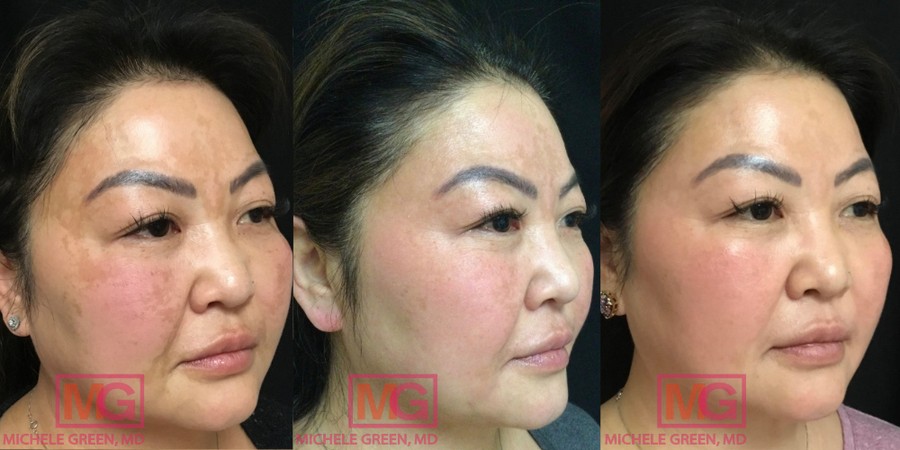
The Cosmelan Peel is the leading depigmentation treatment in my NYC office. It is designed to remove hyperpigmentation and regulate melanin production to prevent its return. This peel not only eliminates existing melanin from the skin but also inhibits tyrosinase, an enzyme essential for melanin production. This treatment is tailored to each patient, as I determine the optimal length of time to keep the peel on, based on the severity of the condition, skin tone, and skin type, to maximize results and effectiveness. With the Cosmelan Peel, the blend of active ingredients accelerates skin renewal to eliminate the buildup of melanin produced in the epidermis and dermis, reduce melanin production, and diminish dark spots on the skin, inhibiting the migration of pigment to the epidermal layers of the skin, inhibiting tyrosinase activity, and reducing the synthesis and production of melanin.
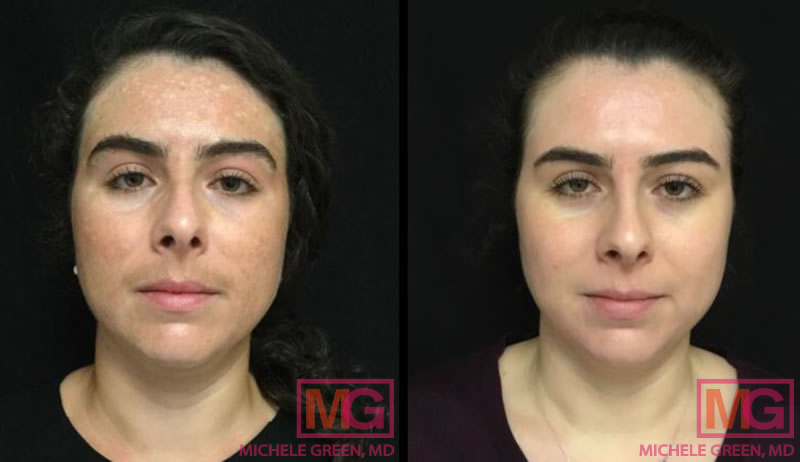
The Mesopeel is specifically formulated to address hyperpigmentation on the face and body. This treatment works by controlling melanocyte activity, which is responsible for producing melanin, giving the skin its pigment. The formulation gently yet effectively fades the appearance of skin discoloration, dark spots, and photoaging. This treatment can be used on more delicate areas of the body, such as the under-eye area, axillae, and inner thighs, where other peels may be too irritating. The Mesopeel breaks the bonds that hold dead skin cells on the skin’s surface, increasing the skin cell turnover rate to reveal healthy, new skin cells that are more evenly toned and textured.
Lasers are generally not recommended for treating hyperpigmentation, as the heat generated can also stimulate melanocytes, potentially exacerbating the condition. These melanocyte cells produce and contain melanin, which can cause more pigment and potentially lead to post-inflammatory hyperpigmentation (PIH). With lasers, the pigment can be worsened, making it more difficult to treat in the future.
